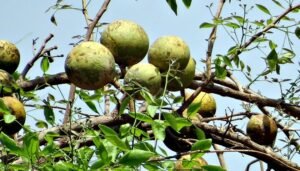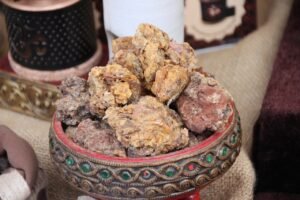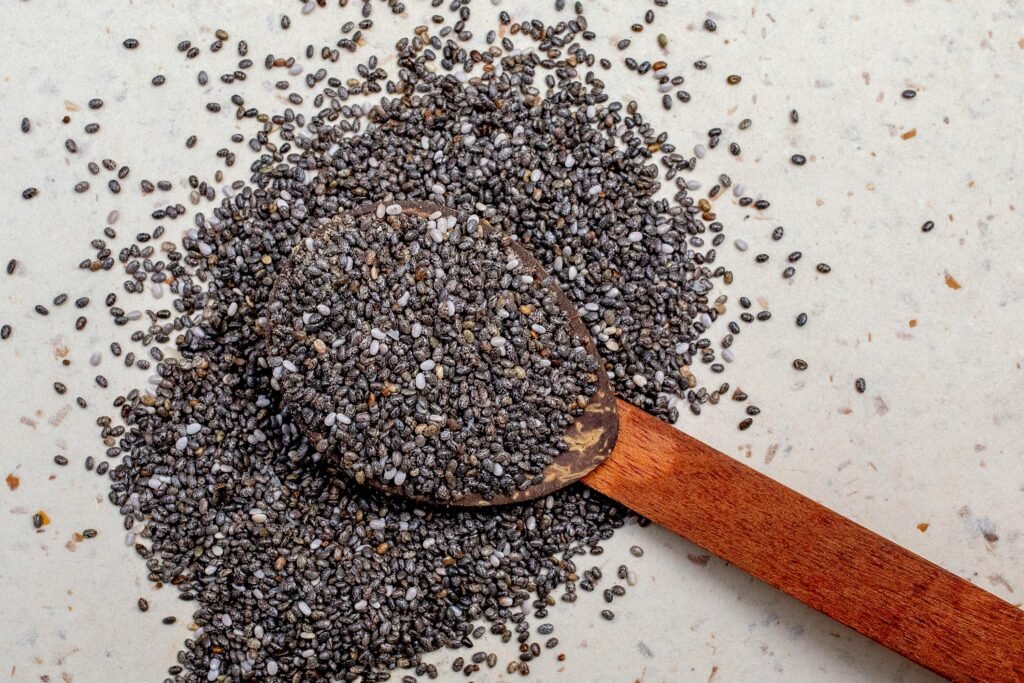Medicinal plants are increasingly recognized for their role in treating diabetes mellitus, a complex metabolic disorder. These plants contain bioactive compounds like flavonoids, alkaloids, phenolics, and tannins that can enhance pancreatic function and regulate glucose absorption. About 410 medicinal plants have been experimentally proven to have anti-diabetic properties, but the complete mechanisms have only been studied for 109 plants. These plants influence metabolic pathways such as glycolysis, gluconeogenesis, the Krebs cycle, glycogen synthesis/degradation, and insulin synthesis/release. India, with a high diabetes prevalence, faces challenges in managing the disease, highlighting the need for cost-effective, accessible treatments. Herbal remedies offer promise in this context, with potential for fewer side effects and better patient outcomes.
Medicinal plants with anti-diabetic activities
- Ginger (Zingiber officinale Roscoe): Ginger is traditionally used for various conditions including diabetes and has hypoglycemic, anti-diabetic, antioxidant, hypocholesterolemic, and hypolipidemic potential. Supplementation in diabetic patients improved glycemic index and antioxidant status. Gingerol, an active component, enhances insulin secretion and glucose uptake in muscles.

- Aegle marmelos (L.) Corrêa (Wood apple): Commonly used in traditional medicine for digestive issues and as a body coolant. Various studies have shown its potential in reducing blood sugar levels and improving glucose tolerance in diabetic rats. Extracts from the fruit, leaves, and bark have demonstrated protective effects on the pancreas and beta cells, potentially improving insulin sensitivity and offering antioxidant benefits. Specific compounds isolated from the plant, such as limonene and phenylethyl cinnamides, have shown promising anti-diabetic and anti-glycative properties.

- Coriander (Coriandrum sativum L.): Known for its medicinal and nutritional properties, used in food and traditional medicine. Research indicates that extracts from the plant can have hepatoprotective, hypoglycemic, and hypolipidemic effects, as well as improve antioxidant status in diabetic rats. It may also help normalize blood glucose levels, improve insulin resistance, and support pancreatic beta cell function.

- Momordica charantia, commonly known as karela, bitter gourd, balsam pear, or bitter melon, is a vine widely used for its anti-diabetic properties, particularly in India, the Caribbean, South America, and East Africa. It’s part of the Cucurbitaceae family, and its leaves, fruits, and seeds are known to lower blood sugar levels in diabetic patients. The hypoglycemic effect is attributed to compounds like momordicin, stearic acid, charantin, eleostearic acid, plant-based insulin-like peptide (p-insulin), oleanolic acids, and cucurbutanoids. However, those with allergies to Cucurbitaceae family members, such as melons and gourds, should be cautious when using any part of the bitter melon plant.

- Black Plum (Syzygium cumini (L.) Skeels): Jamun is consumed for diabetes treatment in Indian traditional medicine. Extracts from Jamun have shown significant blood glucose lowering effects, hypolipidemic and hypoglycemic properties, and protective mechanisms against oxidative stress. Compounds like Vitalboside A and flavonoids in Jamun enhance insulin sensitivity and glucose transport, and upregulate peroxisome proliferator-activated receptors (PPARα and PPARγ), contributing to its anti-diabetic effects.

- Allium sativum L. (Garlic) : Garlic is recognized for its numerous health benefits, including lowering blood sugar levels and improving insulin sensitivity in diabetic patients. Its key phytochemicals include allicin, sulfur compounds, flavonoids, saponins, and fructans, which contribute to its anti-inflammatory, antioxidant, and hypoglycemic properties. Clinical trials have demonstrated that garlic supplementation, alongside standard anti-diabetic drugs, helps control type 2 diabetes by reducing insulin resistance and lowering fasting glucose and HbA1C levels.

- Green tea, rich in antioxidants like polyphenols and Epigallocatechin-3-gallate (EGCG), is particularly beneficial for type 2 diabetes. Its unique steaming process preserves these compounds, which help reduce oxidative stress and inflammation, thus improving insulin sensitivity. Research indicates that green tea, with its high content of polyphenols and Epigallocatechin-3-gallate (EGCG), may enhance insulin sensitivity and potentially reduce the risk of type 2 diabetes. Regular intake is associated with a decreased risk of this condition and can support weight management efforts, which are important for diabetes prevention and control. The beneficial effects of green tea are likely due to its influence on glucose and lipid metabolism, helping to maintain healthy blood sugar levels.

- Murraya koenigii, known as the curry leaf, has been shown to: Reduce blood sugar and protect against diabetic neuropathy. Improve antioxidant status and renal function. Enhance insulin sensitivity and glucose tolerance. Its extracts, particularly the aqueous one, have demonstrated strong hypoglycemic and hypolipidemic actions, potentially due to the presence of trace elements like zinc and copper.

- Gymnema sylvestre, commonly referred to as gurmar, is known for: Its ‘sweet destroying’ property, which helps in reducing sugar cravings. Regenerating islet cells and inhibiting glucose absorption from the intestine. Increasing glucose utilization and the activity of glucose-utilizing enzymes.
- Phyllanthus emblica L. (Indian gooseberry), also known as Amla, is another important plant in Ayurvedic medicine that: Exhibits anti-inflammatory, anti-cancer, and immunomodulatory properties. Helps maintain glucose homeostasis and improves glucose metabolism. Stimulates pancreatic insulin secretion and regenerates beta cells. Reduces fasting serum glucose levels and improves oral glucose tolerance. Lowers total lipids and improves cholesterol levels.

- Cinnamomum verum J. Presl (Cinnamon tree) : Cinnamon, derived from the bark of Cinnamomum trees, is a globally favored spice known for its golden-yellow color and warm, aromatic taste due to cinnamic aldehyde. It’s recognized for its potential to reduce blood glucose levels in diabetic patients without adding calories. It is celebrated for its therapeutic properties, including its ability to act as an antioxidant, anti-inflammatory, and anti-diabetic agent. It’s particularly effective in enhancing insulin sensitivity and lowering blood glucose and cholesterol levels, thanks to its active constituents like cinnamic acid and cinnamaldehyde.

- Ocimum tenuiflorum L. (Holy basil) :Holy basil is a sacred herb in India with medicinal uses. It helps in reducing blood glucose and lipid levels, stimulates insulin secretion, and offers renal protection in diabetic conditions.

- Coccinia grandis (L.) Voigt (Ivy gourd) :Ivy gourd demonstrates anti-diabetic and hypoglycemic activities, with its fruit and leaf extracts showing renoprotective effects, improving glucose tolerance, and possessing antioxidant properties. It also mimics insulin activity and inhibits aldose reductase, an enzyme involved in diabetic complications.

- Okra: The 2013 study by Ben-Chioma et al. explored the anti-hyperglycemic properties of okra (Abelmoschus esculentus). In their experiment, diabetic conditions were induced in Wistar rats, except for a control group. The diabetic rats were treated with either dried powdered okra, okra aqueous extracts, or the anti-diabetic drug glibenclamide over a 14-day period. The results showed a significant reduction in fasting blood glucose levels in the groups treated with okra, with a statistical significance of ( p<0.05 ). This supports okra’s potential as an effective natural treatment for diabetes mellitus.

- Guggul, also known as Oleogum resin or Commiphora mukul, is a traditional Asian herbal medicine used for diabetes treatment. The resin, with a balsamic odor, is produced by the guggul tree native to Bangladesh, Pakistan, and India. The active compounds, guggulsterones, contribute to its efficacy in blood sugar control by influencing glucose and lipid metabolism. Guggul also supports pancreatic health, aiding insulin production. Additionally, commipheric acid and guggulipid activate the PPARγ hormone, essential for regulating fat cells and maintaining healthy cholesterol and glucose metabolism.




